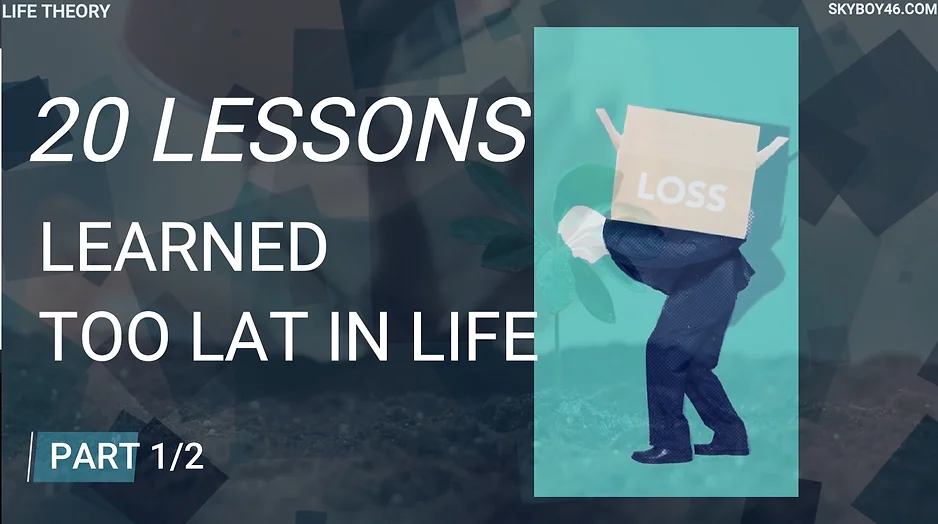Don’t Want To Read?
Watch/Listen To The Full Video on YouTube
We all exist along a spectrum—our personalities, traits, and behaviors constantly shifting based on circumstances and growth. Understanding that fluidity allows us to embrace change and evolve, helping us live a more balanced and fulfilling life.
SUBSCRIBE: https://www.youtube.com/@LifeTheory46
We’re All on a Spectrum – Life Stories 217
You’ve probably heard the term “on the spectrum” before, usually linked to autism. But let’s shift that idea a little today. A spectrum doesn’t just apply to conditions or categories—it represents any position between two extremes. We often try to place our personalities, skills, and traits on one side or the other: “I’m this or that.” But that’s far too rigid. In reality, we are constantly shifting along a spectrum.
Think about it: many of us are introverted until we meet the right people. We dislike reading until we pick up the right book. We’re shy until we feel comfortable enough to speak up. We are never static; we flow and change with our environments, our moods, and the people around us. Understanding where we fall on this spectrum at any given time can help us decide if we want to stay there or if it would be healthier to move along it.
Our personalities, like the world around us, are not black and white. We don’t exist on one extreme or another—we are constantly shifting, adapting to our surroundings, the time of day, or even just how we feel. This perspective allows us to see our behaviors not as fixed, but as fluid, open to change when needed.
What’s more fascinating is that this concept of a spectrum has long existed in various cultures, particularly when it comes to gender. For example, in the Igbo culture of Nigeria, there isn’t even a linguistic distinction between genders. Responsibilities traditionally associated with men, like managing land, can be taken on by women if a family’s circumstances require it. After the Nigerian Civil War, when many sons didn’t return home, some women took on the role of “female husbands” to continue the family lineage.
Other cultures like the hijras in India, two-spirit people in Native American traditions, or the muxes in Mexico have long embraced fluid gender roles. These cultures understand that identities, like personalities, exist on a spectrum. If something as fundamental as gender can be fluid and ever-changing, then surely other aspects of our lives—like our personalities—can evolve too.
Western societies have historically struggled with this idea, often boxing things into fixed categories. For centuries, especially under the influence of rigid religious and social systems, everything had to fit neatly into black or white boxes. Fluidity wasn’t welcome because it left room for critical thinking and personal evolution—threatening to shake the systems of power.
But the truth is, understanding the spectrum of our personalities gives us more control over our lives. Psychologists have long talked about the Big Five personality traits—openness, conscientiousness, extraversion, agreeableness, and neuroticism. Unlike older models that aimed to box people into categories like introvert or extrovert, thinkers or feelers, the Big Five recognizes that these traits exist on a continuum. We’re not locked into one identity forever.
Our personalities are fluid, and they can evolve with time and experience. Research shows that as we age, traits like conscientiousness—our attention to detail and work ethic—tend to increase, while traits like neuroticism—our tendency to feel negative emotions—tend to decrease. And while it might be tempting to dial up all the “positive” traits and reduce the “negative” ones to zero, that wouldn’t lead to a balanced life.
Your personality traits are there for a reason. Maybe your higher level of neuroticism keeps you cautious and safe, while your lower openness keeps you grounded. It’s important to understand how these traits serve you before you try to change them. But if you find that certain traits are negatively affecting your life, it’s empowering to know that you can change them.
There’s a growing body of research showing that with the right mindset and dedication, we can shift our personalities. Over a 16-week training program, participants have successfully altered their Big Five traits, leading to greater well-being. But change isn’t about wiping out the negative aspects of yourself—it’s about achieving balance.
We’re all on a spectrum, and acknowledging that gives us the power to both understand and, if necessary, adjust the parts of ourselves that no longer serve us. So, er, as you go through today, think about where you fall on your personal spectrum. Embrace the fluidity of who you are and the potential for growth. You have the power to navigate that spectrum with intention, creating a life that feels balanced, fulfilling, and uniquely yours.
–> Read More Life Stories Here:
https://www.lifetheory.us
https://www.lifetheory.eu
Buy all of our Life Stories & Our Premium Learning Packs. Listen or Read to them anytime you want. Have them Forever.
You can get each monthly lesson on our website at https://www.skyboy46.com/store
SHARE THIS STORY
Visit Our Store
SHOP NOW
www.skyboy46.com & www.myskypet.com
Designed For Pet Lovers & Introverted Souls
Sport, Hobbies, Motivation, Music & Art






~EXPLORE MORE~
www.linktr.ee/skyboy46


